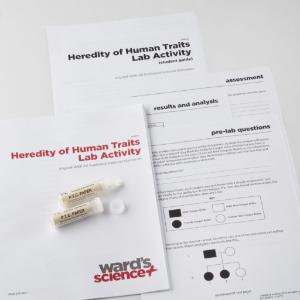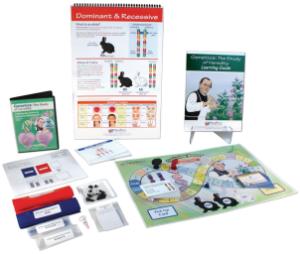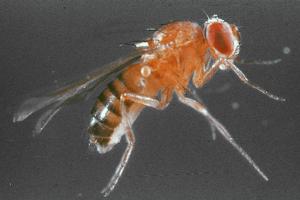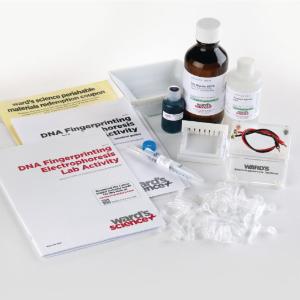Human genetics facts to pass on! Get a free student handout from AccessScience
Access to this content is available to Ward's World readers for free from McGraw Hill's AccessScience, an award-winning, digital STEM resource containing exclusive articles written by expert scientists and engineers; biographies of well-known scientific figures; science news, videos, and animations; and much, much more.
Instructors can use AccessScience to guide students on their research project journeys, to help students understand scientific concepts, to support distance learning efforts, in flipped classroom approaches, and in countless other ways.
Ward’s World and AccessScience have partnered to offer educators a no-obligation, free trial subscription to AccessScience. Request your free trial today to discover how valuable AccessScience can be for you and your students! Get your free trial now.
Middle and High School
Over the past 50 years, genetics has become a hot topic. Since research evolved from obscure experiments with fruit flies, bacteria, and viruses to the Human Genome Project, human genetics has become part of everyday conversation. By knowing genetic backgrounds, people can create more healthy environments. Genetic knowledge is informative and empowering!
You can make your human genetics lesson plans CRISPR by including these questions:
What is Genetic Engineering?
From chromosomes and the double helix to regeneration and Mendelism, studying genetics and biotechnology concepts enable your students to do mind-blowing scientific exercises at home, in the classroom, or a makerspace.
Genetic engineering is an application of biotechnology, where scientists use recombinant DNA (rDNA) technology to alter the genetic makeup of an organism. The domestication of dogs through controlled breeding is an early example of humans indirectly manipulating genomes. That special love we have for our adorable fur babies is by design! After all, would Dorothy have run away from home to save Toto if he were a ferocious wolf?
What is a Genome?
In the simplest terms, a genome is a collection of all an organism’s DNA. From roses to rodents, all living organisms have a unique genome. A genome is packed with all the information an organism needs to develop from a single cell into its final form. It guides growth, organ function, and repairs.
As technology advances, we see the impact of genetic research in our daily lives, including medical decisions and treatments, food safety, ancestry, and more.
Researchers are also giving a lot more attention to epigenetics, the study of how organism behaviors and environment can cause changes that affect the way genes work. For example, according to the CDC,
-
smokers tend to have less DNA methylation (an essential component in numerous cellular processes) than non-smokers, and
-
germs can change your epigenetics to weaken your immune system. This helps the germ survive.
Your lesson plans on human genetics can be a fun and engaging way to encourage active discussion and critical thinking skills. In addition, students can learn about the essential role DNA plays in all living things.
Download McGraw Hill's AccessScience article, Human Genetics, to get started. The free download also includes assessment questions and answers you can use to test student understanding. Download teacher key here.
Recommended Products
[StartProductBlock]

Heredity of Human Traits Lab Activity
Use Mendelian laws to predict the frequency of the tongue-rolling gene. Students test for the ability to taste phenylthiocarbamide (PTC).
[EndProductBlock]
[StartProductBlock]

Genetics: The Study of Heredity Curriculum Learning Module
NewPath’s Genetics: a complete set of visual, digital and hands-on resources to master key concepts on Genetics & Heredity.
[EndProductBlock]
[StartProductBlock]

Drosophila Sets, Live Fruit Flies
Drosophila melanogaster, the common fruit fly, is widely used in genetic studies. Students can study sex-linked, recessive, and dominant mutations. Drosophila also makes excellent live food for mantises, small reptiles, and amphibians.
[EndProductBlock]
[StartProductBlock]

Ward's® DNA Fingerprinting Electrophoresis Lab Activity
Explore basic elements of forensic science. Students get DNA samples from a “crime scene” to electrophorese and discover who perpetrated a crime by analyzing their unique genetic patterns or fingerprints.
[EndProductBlock]
[StartProductBlock]

Ward's® Introduction to Agarose Gel Electrophoresis Lab Activity
A fast and easy activity that uses dyes to help acquaint students with the electrophoresis process before working with DNA.
[EndProductBlock]
[StartProductBlock]

DNA On A Chain Kit
Students use a simple process to lyse cheek cells to explore DNA extraction.
[EndProductBlock]
